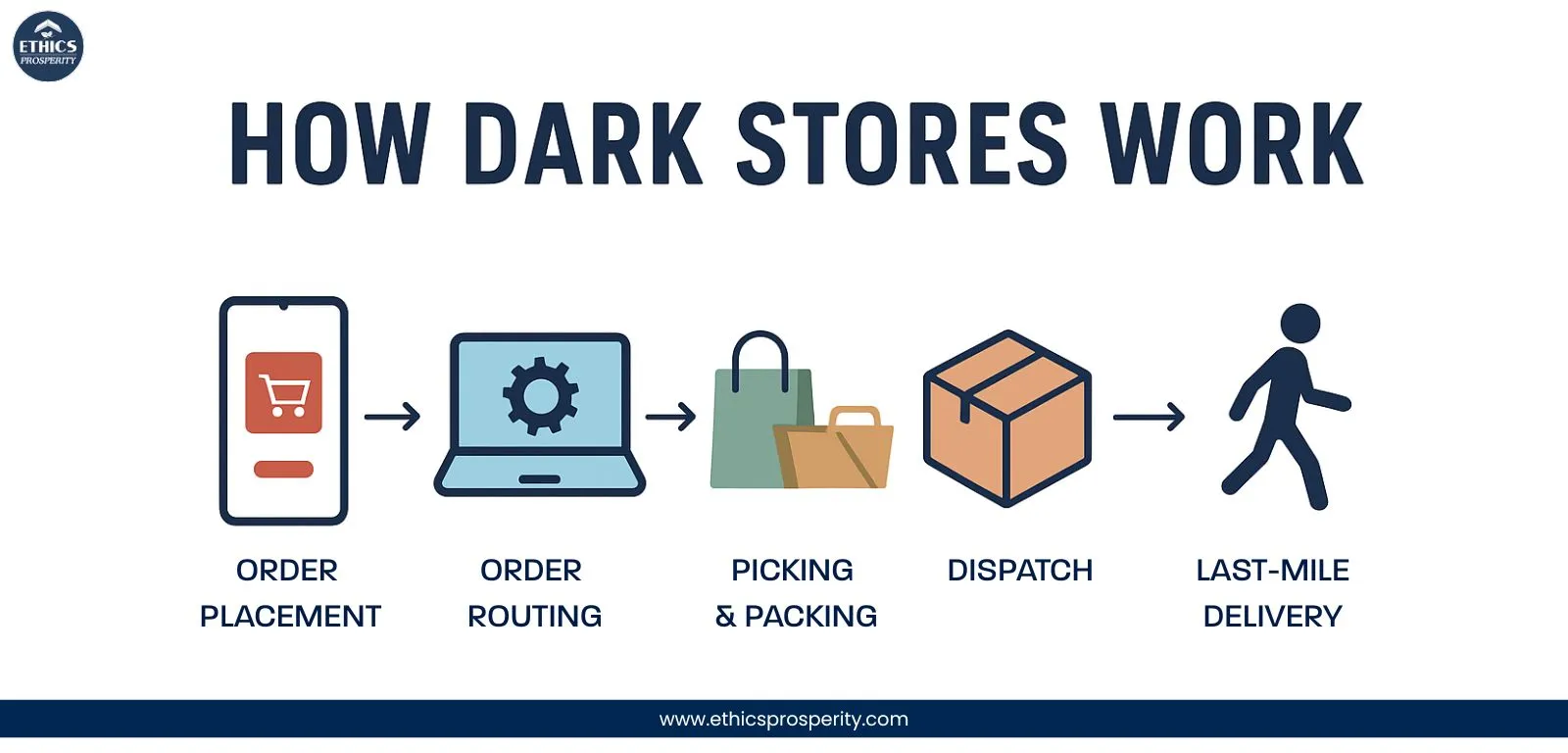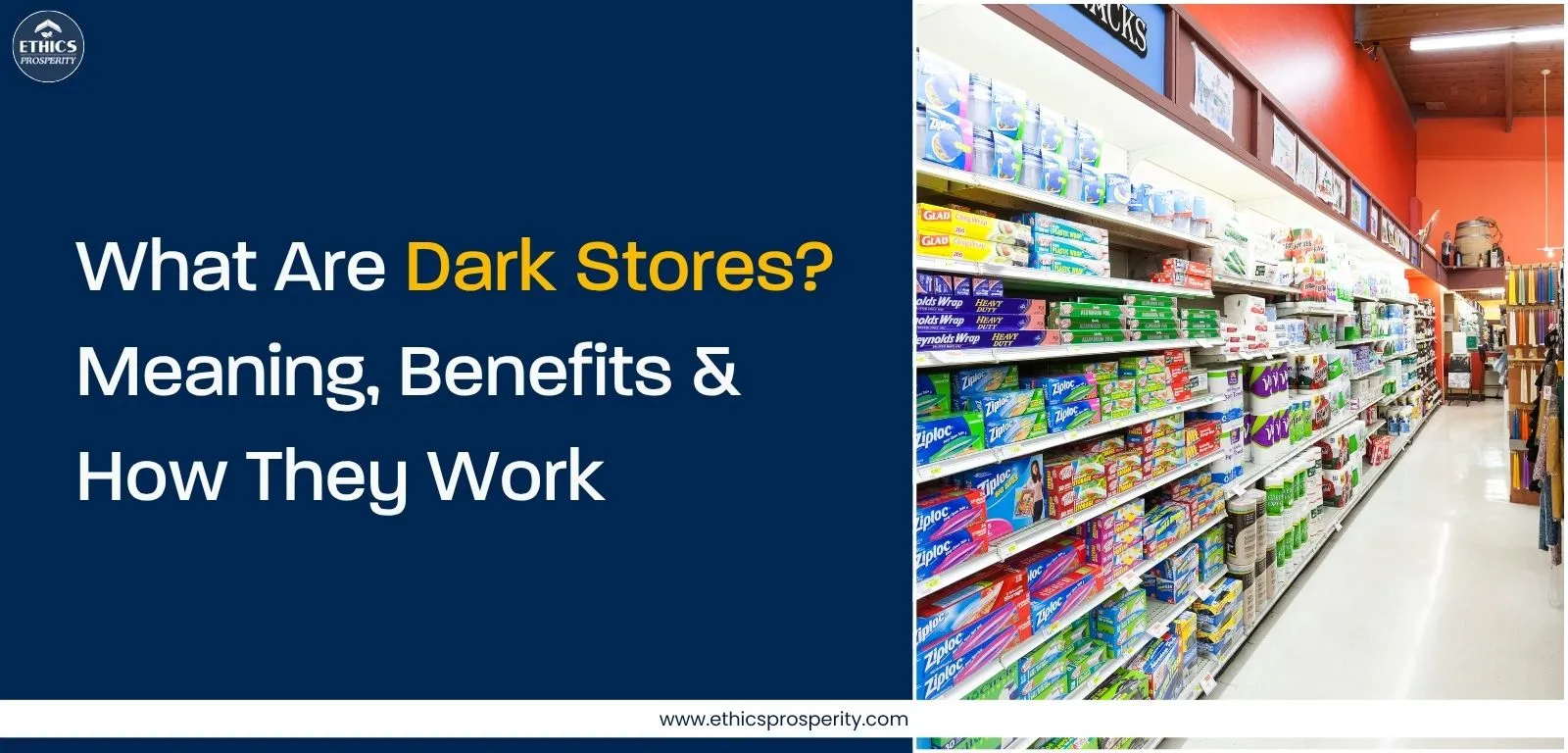The retail world is transforming faster than ever. With the explosion of e-commerce and quick commerce, traditional retail models are evolving into more efficient, technology-driven ecosystems. Among the biggest innovations leading this shift are dark stores — specialized fulfillment centers designed to process online orders with speed, accuracy, and automation.
By 2025, India’s e-commerce market is expected to exceed USD 120 billion, and the quick commerce industry is growing at a staggering 65% CAGR. In this environment, dark stores are the backbone that ensures efficient online order fulfillment and last-mile delivery.
As someone who has spent over four decades optimizing supply chains, I can confidently say dark stores represent the future of omnichannel retail logistics.
What Is a Dark Store?
A dark store is a retail outlet that serves exclusively as a fulfillment center for online orders. It is not open to walk-in customers but is structured like a mini warehouse — stocked with products, organized by categories, and equipped with digital inventory management systems.
Think of it as the bridge between traditional retail stores and modern fulfillment centers. These facilities enable companies to process, pack, and deliver orders rapidly within tight delivery windows, often under 30 minutes for quick commerce operations.
How Do Dark Stores Work?

Dark stores work as micro-fulfillment hubs integrated with online order management systems (OMS) and warehouse management systems (WMS).
Here’s a step-by-step breakdown of the dark store fulfillment process:
-
Order Placement – The customer places an order via an app or website (e.g., Blinkit, Zepto, or Swiggy Instamart).
-
Order Routing – The OMS automatically assigns the order to the nearest dark store based on proximity and stock availability.
-
Picking & Packing – Automated pick lists are generated, and warehouse associates pick items using handheld scanners or AI-powered picking robots.
-
Dispatch – Products are verified, packed securely, and handed over to last-mile delivery riders.
-
Last-Mile Delivery – Orders are delivered to the customer within 10–30 minutes via hyperlocal riders.
Dark stores typically serve customers within a 2–5 km radius, ensuring speed and operational efficiency.
Benefits of Dark Stores
1. Ultra-Fast Order Fulfillment
Dark stores minimize delivery times dramatically. A study shows that customers are 70% more likely to reorder if their delivery arrives in under 30 minutes — a promise made possible through micro-fulfillment centers and AI-driven dispatch systems.
2. Optimized Inventory Management
Unlike traditional retail outlets, dark stores use real-time data analytics for replenishment. Integration with Warehouse Management System (WMS) and demand forecasting systems ensures optimal stock levels, reducing the risk of stockouts by 35%.
3. Cost Efficiency
Operating without physical shoppers means dark stores can use smaller spaces in urban areas. This lowers rental, utility, and labor costs by nearly 25–30% compared to traditional stores.
4. Enhanced Last-Mile Efficiency
Dark stores are strategically placed close to consumers, supporting quick commerce and reducing last-mile logistics costs, which typically account for 53% of total shipping expenses.
5. Scalability & Omnichannel Integration
Brands can easily replicate the dark store model in different cities, using a single integrated End-to-End Supply Chain Management platform.
Dark Store vs. Regular Store – What’s the Difference?
| Factor | Dark Store | Regular Store |
|---|---|---|
| Purpose | Online order fulfillment | Walk-in customer sales |
| Layout | Warehouse-style aisles for picking | Customer-friendly display aisles |
| Inventory System | Automated WMS integrated | Manual or semi-automated |
| Delivery Speed | 10–30 minutes (Quick Commerce) | Depends on in-store purchase |
| Cost Efficiency | High space utilization | High rent and retail cost |
| Technology Use | AI, IoT, robotics | POS systems, manual billing |
Challenges in Running Dark Stores

Even with high efficiency, managing dark stores isn’t without challenges.
-
Inventory Synchronization: Balancing real-time inventory visibility across multiple locations is crucial. Integration of Blockchain in Supply Chain is increasingly being used to track item-level movement and ensure accuracy.
-
Last-Mile Delivery Constraints: Urban congestion and fluctuating fuel prices can affect delivery times. Solutions like AI-based route optimization and EV fleets are reducing these issues by up to 18%.
-
High Initial Setup Costs: Building automated dark stores involves technology investment — from robotics to data systems — which can reach INR 50–75 lakh per store.
-
Demand Volatility: Quick commerce faces peak-hour traffic and unpredictable order surges. Advanced AI-driven forecasting helps maintain consistency.
Technology Used in Dark Stores
The backbone of dark store efficiency is technology integration. Below are key innovations driving this transformation:
-
Warehouse Management Systems (WMS) – For real-time inventory and picking optimization.
-
Order Management Systems (OMS) – To route orders to the nearest store for fast fulfillment.
-
AI and Machine Learning – Predicts demand patterns, reducing waste by 20%.
-
Robotics and Automation – Smart conveyors and robotic arms cut order picking time by 40%.
-
IoT Sensors – Enable temperature and humidity monitoring for FMCG and perishables.
-
Blockchain in Smart Warehousing – Enhances transparency and traceability throughout the supply chain.
Examples of Companies Using Dark Stores
1. Blinkit
India’s leading Quick Commerce Company, Blinkit operates over 600+ dark stores and delivers groceries in 10 minutes across major metros.
2. Swiggy Instamart
Swiggy uses a hybrid model combining dark stores and partner warehouses to optimize order management and last-mile delivery.
3. Zepto
Zepto’s network of micro-fulfillment centers serves more than 25 cities, offering rapid order fulfillment through smart inventory forecasting.
4. BigBasket
BigBasket’s BB Express and BB Now leverage dark stores for online order fulfillment, ensuring 99% order accuracy and average delivery time under 20 minutes.
The Future of Dark Stores
Dark stores are poised to become a USD 5 billion market in India by 2027, driven by urban demand, real-time analytics, and automation.
In the future, we’ll see:
-
AI-based order clustering for higher throughput.
-
Electric fleets to reduce carbon emissions by 30%.
-
Integration of Blockchain in Supply Chain for transparency.
-
Collaboration between Supply Chain Companies in India for scalable fulfillment models.
As retail merges with technology, dark stores will continue to power the future of order fulfillment, quick commerce, and last-mile logistics.
Conclusion
Dark stores have redefined supply chain efficiency, bridging the gap between e-commerce demand and fast urban delivery.
By leveraging automation, AI, and micro-fulfillment, businesses can ensure faster turnaround times, lower costs, and improved customer satisfaction.
In an era where customer expectations evolve by the minute, the Dark Store Supply Chain stands as a benchmark for smart warehousing and agile retail fulfillment.
